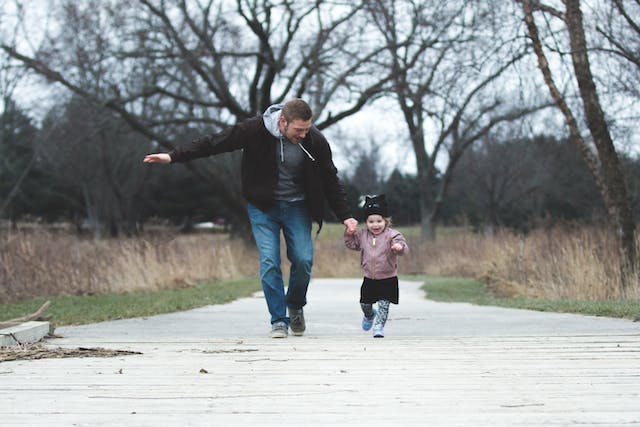
Greetings, everyone! Let’s explore a topic with a profound impact on many lives – fatherless behavior.
Beyond a mere term, it’s a concept that influences individuals on multiple levels.
In this investigation, we’ll break down the essence of fatherless behavior, unveil the contributing factors, examine its manifestations, and, importantly, discuss preventive measures.
Join us as we navigate this exploration, shedding light on the complexities of fatherless behavior and how to proactively address its implications.
What is Fatherless Behavior?
Let’s delve into the intricacies of fatherless behavior.
It extends beyond the mere absence of a father figure; it encompasses the profound impact this absence can exert on behavior and emotional well-being.
Whether stemming from physical absence, emotional distance, or other factors, fatherless behavior encapsulates the array of behavioral patterns shaped by the absence of paternal presence.
In essence, it is a comprehensive term reflecting the complex interplay between a father’s role and the resultant impact on an individual’s actions and emotional state.
Factors Contributing to Fatherless Behavior
To comprehend fatherless behavior, it’s imperative to dissect the contributing factors that shape this multifaceted concept:
Physical absence
When a father is physically absent from someone’s life, whether due to work commitments, separation, or other reasons, it creates a void that significantly influences behavior and emotional well-being.
The absence of a paternal figure may result in a sense of incompleteness, shaping an individual’s development and choices.
Emotional distance
Physical presence alone doesn’t guarantee an emotional connection.
In instances where a father is physically present but emotionally distant, a significant gap in understanding and connection emerges.
This emotional void can profoundly affect behavior, potentially leading to challenges in forming healthy relationships and navigating emotional landscapes.
Role model influence
Positive male role models play a pivotal role in shaping behavior and values.
The absence of such role models can contribute to fatherless behavior, as individuals may lack guidance and examples to emulate.
The importance of positive male figures in influencing personal development cannot be overstated, and their absence can pose challenges in cultivating a strong foundation for one’s behavior and character.

Manifestations of Fatherless Behavior
The impact of fatherless behavior reveals itself through various manifestations, providing insights into the complex repercussions of paternal absence:
Low self-esteem
A lack of paternal support can significantly affect an individual’s self-worth and confidence.
The absence of a father figure to provide validation and encouragement may contribute to feelings of inadequacy and low self-esteem.
Addressing these emotional challenges is crucial for fostering a positive self-image and nurturing a resilient sense of self.
Behavioral issues
Fatherless behavior may manifest in a range of behavioral issues, from rebelliousness to aggression.
The void created by the absence of a father’s guidance may lead to challenging conduct as individuals navigate their emotions and interactions.
Identifying and understanding these behavioral patterns is vital for implementing targeted interventions that address the root causes and promote positive change.
Relationship struggles
Difficulties in forming and maintaining relationships often stem from the lack of a fatherly example.
Individuals may encounter challenges in establishing healthy connections, grappling with trust issues or struggling with communication.
Recognizing these struggles as potential manifestations of fatherless behavior opens avenues for therapeutic interventions and support systems to facilitate healthier relationship dynamics.
How to Prevent Fatherless Behavior

Preventing fatherless behavior involves strategic efforts to cultivate positive influences and foster a supportive environment.
Here’s a detailed exploration of preventive measures:
Encourage positive male influences
Actively promote relationships with positive male figures, such as uncles, family friends, or mentors.
These figures can provide guidance, support, and valuable examples that contribute to a well-rounded development.
Encouraging such connections helps mitigate the impact of paternal absence and instills positive male influences in an individual’s life.
Open communication
Establishing an environment where feelings can be openly expressed is fundamental.
Open communication bridges emotional gaps, allowing individuals to articulate their thoughts, concerns, and emotions.
Creating a space for honest dialogue fosters emotional well-being and enables the development of healthy coping mechanisms, mitigating the potential negative effects of paternal absence.
Support systems
Strengthening support networks is crucial in preventing fatherless behavior.
Friends, family, and community resources play pivotal roles in providing a sense of belonging and support.
Establishing robust support systems creates a safety net for individuals, offering emotional support and guidance that can compensate for the absence of a father figure.
Conclusion
In navigating the intricate terrain of human behavior, the acknowledgment and addressing of fatherless behavior stand as pivotal steps toward fostering positive change.
By comprehending the contributing factors, identifying its various manifestations, and proactively engaging in prevention strategies, we aspire to cultivate a more supportive and nurturing environment for individuals grappling with the absence of a father figure.
This comprehensive approach seeks to empower affected individuals and communities, fostering resilience and well-being amidst the complexities of fatherless behavior.
FAQs
While it may pose challenges, with the right support and interventions, individuals can overcome the effects of fatherless behavior and develop healthier behavioral patterns.
Fatherless behavior can manifest at various stages of life, from childhood to adulthood. The impact may vary, but addressing it early on is beneficial for emotional well-being.
Absolutely! A robust support system, including positive role models and open communication, can significantly contribute to mitigating the effects of fatherless behavior.


